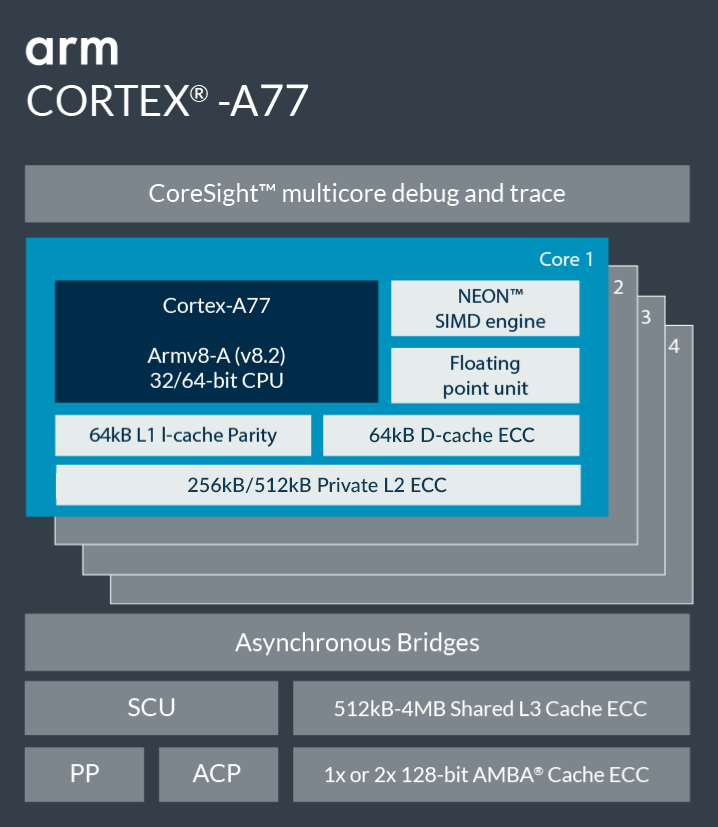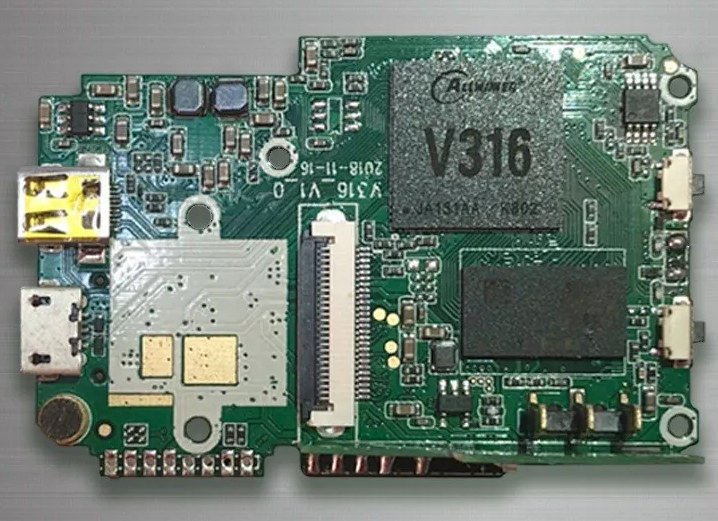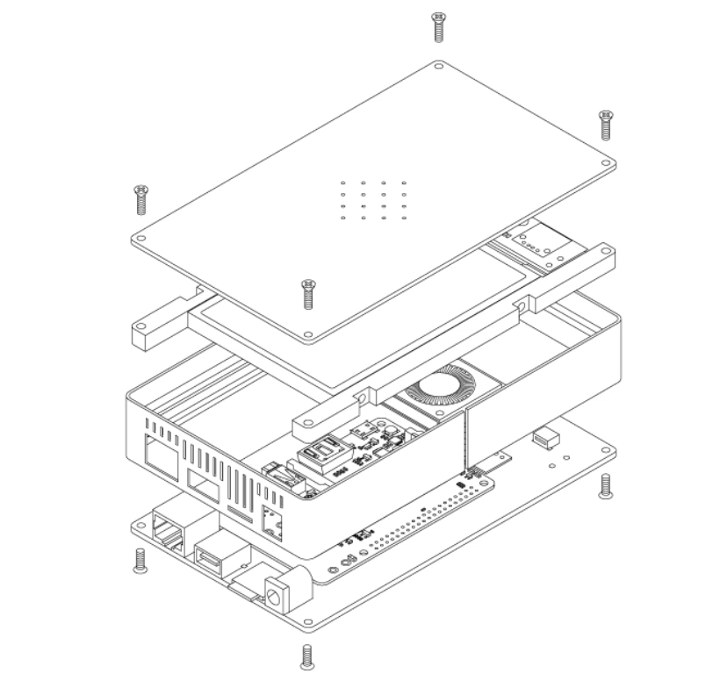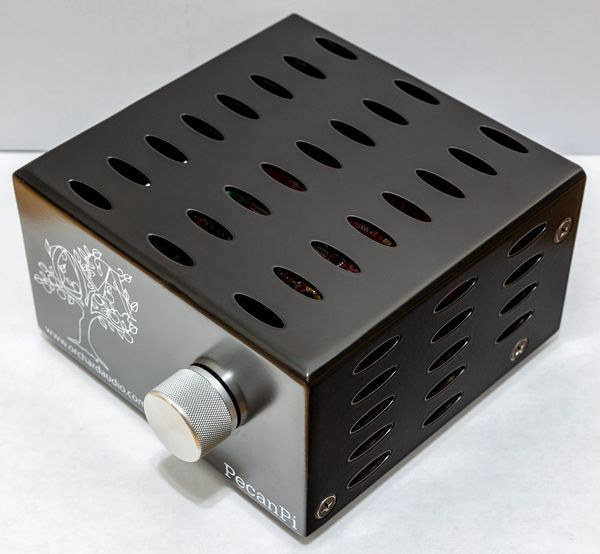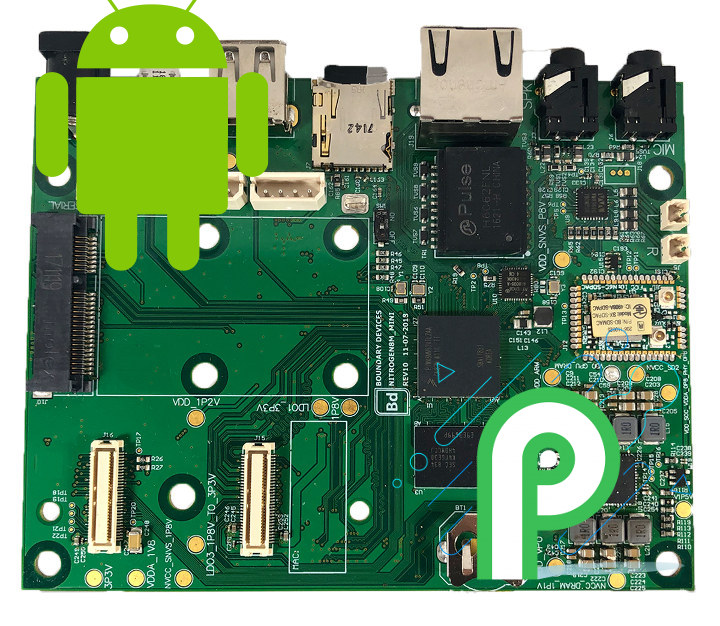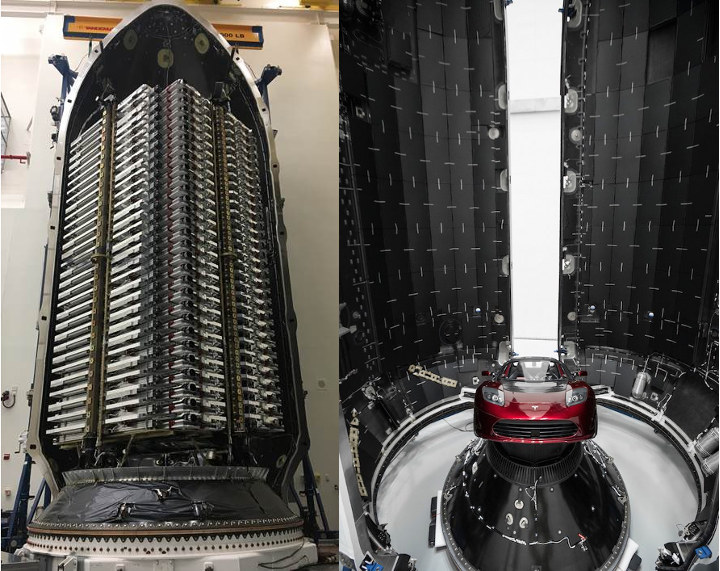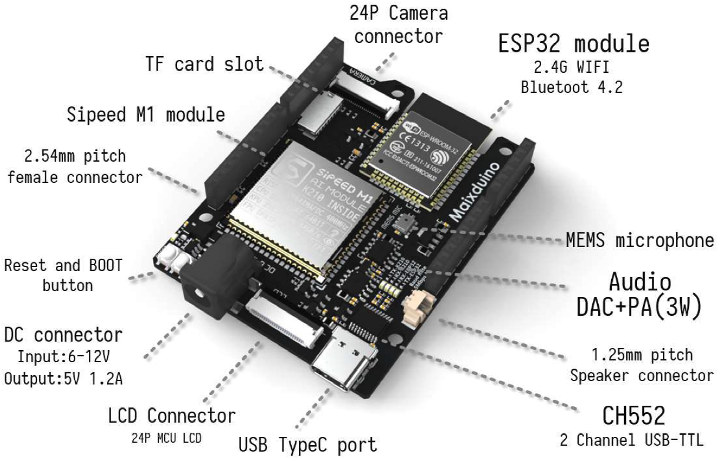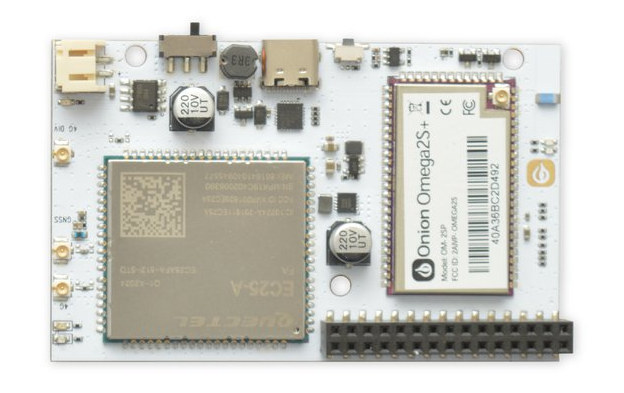Arm unveiled its Cortex-A76 CPU and Mali-G76 GPU right before Computex 2018, so it should come as no surprise that the company decided to make announcements for the upgrades before Computex 2019 with the just introduced Arm Cortex-A77 processor, and Mali-G77 GPU. Arm Cortex-A77 Processor highlights: 64-bit Armv8 CPU with support for Armv8.1 and Armv8.2 extensions, as well as Armv8.3 with LDAPR instructions only Up to 4 processors per cluster Cache – 64KB L1 I-Cache / D-Cache, 256KB to 512KB L2 Cache, optional L3 Cache between 512KB and 4MB Improved performance for mobile and laptop devices enabling AAA-gaming, faster web-browsing and application launch time. Brings always-on, always-connected feature set of mobile to laptop devices Compatible with the newly announced Mali-G77 and machine learning (ML) processor. Compared to Cortex-A76, Cortex-A77 yields up to 20% improved IPC performance with similar efficiency. The new IP core is basically an upgrade over A76 with […]
Allwinner V316 Processor is made for Low-Cost “True” 4K 30 FPS Cameras
Allwinner V-Series processors target camera applications, especially sports and action cameras, and we’ve already coverd Allwinner V3 single core Arm Cortex-A7 processor for 1080p60 / 4K15 cameras, as well as Allwinner V5 quad core Cortex-A7 processor for 4K30 cameras enhanced with artificial intelligence capabilities. Allwinner has showcased and/or unveiled more Cortex-A7 processors at CES Asia 2019 such as Allwinner R328 for voice applications, or Allwinner T7 for automotive dashboards, as well as a new camera processor called Allwinner V316 with two Arm Cortex-A7 cores, apparently the same 4K @ 30 fps H.265/H.264 encoder as in V5, but without AI engine architecture. Allwinner V316 key features and preliminary specifications: CPU – Dual core Arm Cortex-A7 processor @ 1.2 GHz ISP – HawkView 6.0 image processor with 2D/3D intelligent noise reduction, frame width dynamic synthesis, sharpening enhancement, specific color enhancement and other image pre-processing techniques Video – 4K Smart H.264/H.265 video encoder […]
NODE Mini Server V2 is a Raspberry Pi Based Storage Server for the Decentralized Web
We’ve previously covered networked hard drive enclosures with Ethernet and/or WiFi running OpenWrt or Ubuntu that allows you to easily and fairly cheaply connect SATA drives to your local network with models such as Blueendless X3. NODE has done something similar with a DIY project featuring a Raspberry Pi 3 Model B+. NODE Mini Server V2 connects the popular SBC to a 2.5″ SATA hard drive over USB and is designed to build out the physical infrastructure for the decentralized web (e.g. IPFS) that would allow users to replace remote servers with nodes that they themselves own and operate. Having said that nothing would prevent you from using this as a simple NAS although performance will not be as optimal as the aforementioned products due to the lack of SATA or USB 3.0 interface, as well as having “Gigabit” Ethernet limited to 300 Mbps. Having said that the design could […]
PecanPi Audio Streamer with Volumio, Squeeze or Rune Audio Goes for $399
We’ve recently covered the upcoming Volumio Motivo audio streamer, but there’s another product for audiophiles running Volumio audio software. Orchard Audio PecanPi Streamer is based on Raspberry Pi 3 boards combined with the company PecanPi DAC HAT bringing high-quality audio to the Raspberry Pi. PecanPi Streamer specifications: SBC – Raspberry Pi 3 Model B with WiFi, Ethernet, 4x USB ports. PecanPi DAC HAT Texas Instruments PCM1794A high performance stereo 24-bit DAC, 192KHz sampling HW volume control and re-clocking via TI SRC4193 sample rate converter XLR Output: Signal to Noise Ratio (SNR): 130dB (A-weighted) Dynamic Range (DNR): 125dB Total Harmonic Distortion + Noise (THD+N): -110dB or 0.0003% Output Voltage: 5Vrms RCA Output: Signal to Noise Ratio (SNR): 124dB (A-weighted) Dynamic Range (DNR): 121dB Total Harmonic Distortion + Noise (THD+N): -110dB or 0.0003% Output Voltage: 2.5Vrms Headphone Amplifier (Dual parallel OPA1622): 390mW peak power into 32 ohms 780mW peak power into 16 […]
Boundary Devices NXP i.MX 8M Mini Board Gets Android 9.0 Firmware
Beside Debian 9.5, Ubuntu 18.04, the Yocto Project, and Buildroot Linux, NXP i.MX 8M Mini processors also supported Android 8.1 Oreo. But Boundary Devices has just announced their Nitrogen8M_Mini single board computers is now getting support for Android 9.0 Pie operating system. The company worked with Kynetics to release an Android 9.0 evaluation image for the i.MX8M Mini boards based on Linux 4.14.x kernel. You can also get the source code to build it from scratch for your board:
|
1 2 3 4 |
mkdir myandroid cd myandroid repo init -u git://github.com/boundarydevices/android-manifest.git -b boundary-imx-p9.0.0_1.0.0-ga repo sync |
You’ll also need NXP vendor package, which you can install as follows:
|
1 2 3 4 5 6 |
tar xvzf imx-p9.0.0_1.0.0-ga.tar.gz cp -r imx-p9.0.0_1.0.0-ga/vendor/nxp/ vendor/ cp -r imx-p9.0.0_1.0.0-ga/EULA.txt . cp -r imx-p9.0.0_1.0.0-ga/SCP* . rm -rf imx-p9.0.0_1.0.0-ga/ rm imx-p9.0.0_1.0.0-ga.tar.gz |
The last step is to build the code:
|
1 2 3 |
source build/envsetup.sh lunch nitrogen8mm-userdebug make 2>&1 | tee build.out |
You can find more details, including instructions to flash the image in the getting started guide. The image and source code are only suitable for evaluation, and you’d have to work yourself to get a production-ready version with security patches, field upgrade, and performance improvements, or ask Boundary […]
Xilinx Arm FPGA, Snapdragon SoM’s, and Wandboard SBC Field Trip to Space
Most embedded systems are used here on planet earth, but some do take off heading for space, and this week I come accross two separate projects leveraging Arm processors and FPGAs, as well as Ubuntu/ROS and Android operating systems: SpaceX Starlink communication satellites and Astrobee robots roaming in the international space station (ISS) SpaceX Starlink Satellites with Xilinx Ultrascale+ Arm + FPGA SoC SpaceX is about to launch a cloud of 60 Starlink communication satellites that aims to provide internet communication anywhere in the world. That’s just a start as eventually the plan is to get up to 12,000 of those satellites. Usually, we would not know many technical details about the satellites, but as one reader pointed out (Thanks Lawrence!), a Reddit thread about the launch, also pointed to a NASA document revealing the satellites are powered by Xilinx Ultrascale+ quad core Cortex-A53 processor with FPGA fabric. Milestone 2 […]
Maixduino SBC Combines RISC-V AI, Arduino Form Factor, and ESP32 Wireless Module
Last year RISC-V cores made it into low-cost hardware with neural network and audio accelerator to speed up artificial intelligence workloads at the edge such as object recognition, and speech processing. More precisely, Kendryte K210 dual-core RISC-V processor was found in Sipeed MAIX modules and boards going for $5 and up. Since then a few other variants and kits have been made available including Seeed Studio Grove AI HAT that works connected to a Raspberry Pi or in standalone mode. Seeed Studio has now released another board with Kendryte K210 RISC-V AI processor, but based on Arduino UNO form factor and equipped with an ESP32 module for WiFi and Bluetooth connectivity. Meet Sipeed Maixduino SBC. Sipeed Maixduino specifications: AI Module – Sipeed M1 with Kendryte K210 dual-core RISC-V processor @ 600 MHz, KPU Convolutional Neural Network (CNN) hardware accelerator, APU audio hardware accelerator, 8 MB general purpose SRAM including 5.9MB […]
Onion Omega2 LTE Board Combines WiFi, 4G LTE and GNSS Connectivity (Crowdfunding)
Onion has launched several compact OpenWrt WiFi boards for IoT projects over the years starting with their Onion Omega board in 2015, and the latest so far being Onion Omega2 Pro with a massive 8GB storage. The company has now launched a new model with 4G LTE connectivity called Onion Omega2 LTE, based on Omega2S+ module, and also featuring GNSS global satellite positioning capability. Onion Omega2 LTE specifications: WiFi Module – Onion Omega2S+ IoT computer module with MediaTek MT7688 MIPS CPU @ 580 MHz, 128 MB RAM, 32 MB storage Cellular and GNS Module – Quectel EC25 LTE Cat 4 modem that delivers 150 Mbps downlink and 50 Mbps uplink data rates, provided either for North America or global markets External Storage – MicroSD card slot up to 2 TB (once such cards become available…) Connectivity 2.4 GHz 802.11 b/g/n Wi-Fi 4 + onboard 2 dBi direction chip antenna & […]


